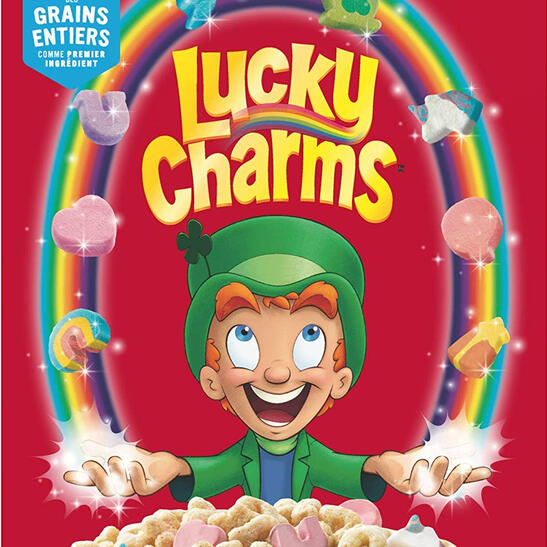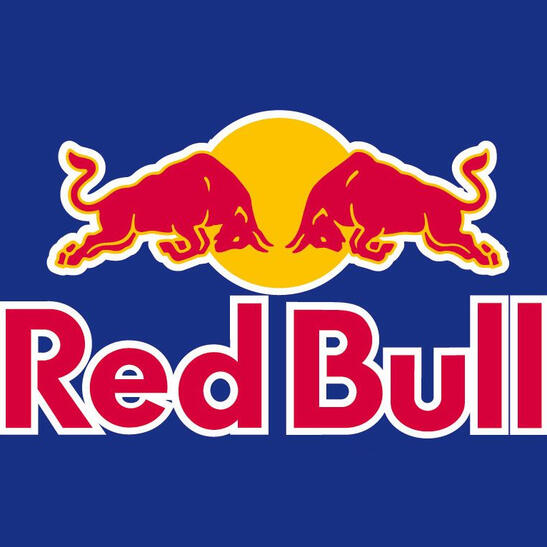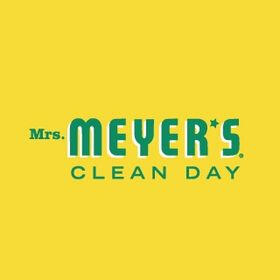Ingredient Profile
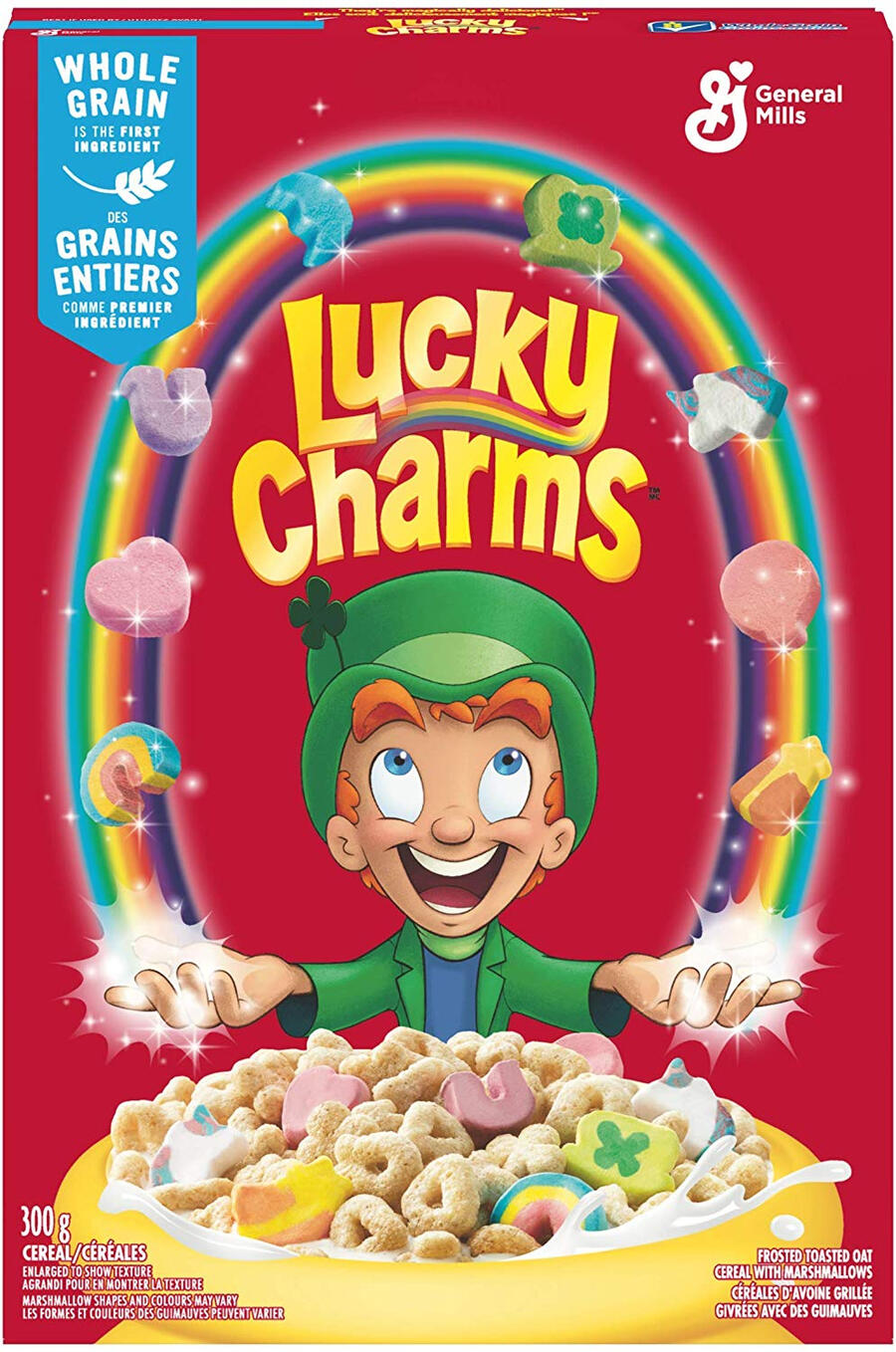
General Mills Lucky Charm Cereal
| Ingredients | Chemical Formula | Elements Present | Atomic Weight | Physical and Chemical Properties | Uses |
|---|---|---|---|---|---|
| Cornstarch | C27H48O20 | Carbon, Hydrogen and Oxygen | 692 g/mol | It has a melting point of 256-258°C and a boiling point of 205ᵒ C; It is insoluble in cold water and alcohol; It has a density of 1.5 g/cm³. | Commonly used for thickening foods (gravy, pudding, sauces); Used as an adhesive for paper coating and corrugated boards. |
| Salt | NaCl | Sodium and Chlorine | 58.5 g/mol | It is soluble in water; It is transparent and colourless in crystalline form; It is non-combustible and has low toxicity. | Used for flavoring and preservation of meat and fish; Used for the production of pottery, soap and chlorine |
| Table Sugar | C12H22O11 | Carbon, Hydrogen and Oxygen | 342 g/mol | It is soluble in water; It is fine crystalline powder that is odorless and colorless | Used as a sweetener; An effective wound healer as it absorbs the wound’s moisture; Used in cosmetics to exfoliate and moisturize. |
| Corn Syrup | C6H14O7 | Carbon, Hydrogen and Oxygen | 198 g/mol | It is a viscous odorless colorless liquid; It is denser than water; It is an aqueous solution of glucose, maltose and other substances derived by hydrolysis of cornstarch. | It is used in foods to soften texture. add volume, prevent crystallization of sugar, and enhance flavor. |
| Dextrose/ Glucose | C₆H₁₂O₆ | Carbon, Hydrogen and Oxygen | 180 g/mol | It has a melting point of 150-152℃; It is a White crystalline powder; It has a sweet taste and has no odor. | It is used to treat very low blood sugar; It is given by injection to treat insulin shock; It is often used in baking products as a sweetener. |
| Gelatin | C102H151O39N31 | Carbon, Hydrogen, Oxygen and Nitrogen | 2433 g/mol | It is a White to slightly yellow powder; It is transparent and brittle, and it can come as sheets, flakes, or as a powder; It is soluble in hot water. | It is used for weight loss and for treating osteoarthritis, rheumatoid arthritis, and brittle bones (osteoporosis); It is also used for improving hair quality and to shorten recovery after exercise and sports-related injury. |
| Vitamin E | C29H50O2 | Carbon, Hydrogen, and Oxygen | 430.7g/mol | Slightly yellow to amber, nearly odourless, clear, viscous oil which oxidises and darkens on exposure to air or light; It is little or no odor and Insoluble in water, but water-dispersible | Vitamin E is used as an antioxidant in vegetable oils and shortenings and cosmetics and as a dietary supplement. It is used in some antibacterial hand soaps, personal care products and some pet care insect repellants; Vitamin E is usually nontoxic. However, large doses have in rare cases caused nausea, diarrhea, other effects. These effects disappeared after discontinuing the vitamin. |
| Trisodium Phosphate | Na3O4P | Sodium, Oxygen, and Phosphate | 163.941 g/mol | White odourless crystals, granules or crystalline powder; Freely soluble in water. Insoluble in ethanol; Rapidly absorbs ... water if exposed to moist atmosphere while when heated to decomposition it emits toxic fumes of sodium oxide and phosphides | Products for removing or preventing boiler scale often contain trisodium phosphate, as do those for removing insecticide residues from fruit and inhibiting mold. |
| Red 40 | C18H14N2O8S2 | Carbon, Hydrogen, Nitrogen, Oxygen, and Sulfur | 496.4 g/mol | Dark red powder or granules; Solubility at 25 °C: in ethanol, 0.001 g/100 mL. When heated to decomposition it emits very toxic fumes of /nitrogen and sulfur oxides/. | Used to color gelatins, puddings, custards, alcoholic and nonalcoholic beverages, sauces, topping, candy, sugars, frostings, fruits, juices, dairy products, bakery products, jams, jellies, condiments, meat and poultry. |
| Vitamin C (sodium ascorbate) | C6H8O6 | Carbon, Hydrogen, and Oxygen | 176.12 g/mol | Vitamin C weighs 176.1 grams and has a molar mass of 68 grams per moles; Its density measures around 1.694 grams per cubic centimeter with a melting point of 190 degrees Celsius; Vitamin C boils at 553 degrees Celsius. | Vitamin C, also known as ascorbic acid, is necessary for the growth, development and repair of all body tissues; It's involved in many body functions, including formation of collagen, absorption of iron, the proper functioning of the immune system, wound healing, and the maintenance of cartilage, bones, and teeth. |
| Vitamin B2 (riboflavin) | C₁₇H₂₀N₄O₆ | Carbon, Hydrogen, Nitrogen, and Oxygen | 376.36 g/mol | It is yellow to orange-yellow crystalline powder, with slight odour, and bitter taste; It has a melting point of 280 °C and is also soluble in water. | Riboflavin is a vitamin that is needed for growth and overall good health. It helps the body break down carbohydrates, proteins and fats to produce energy, and it allows oxygen to be used by the body; It is also used in Medicine, nutrition, animal feed supplement, enriched flours, dietary supplement |
| Vitamin A (Palmitate) | C36H60O2 | Carbon, Hydrogen, and Oxygen | 524.86 g/mol | Vitamin A (Palmitate) weighs 524.86 grams. It is a solid with a melting point of 28.5 °C. | Vitamin A palmitate can be taken in supplement form to support and maintain optimum eye health, immune system health, and reproductive health; It’s often used as an ingredient in multivitamins, and is available as a sole ingredient in supplement form. |
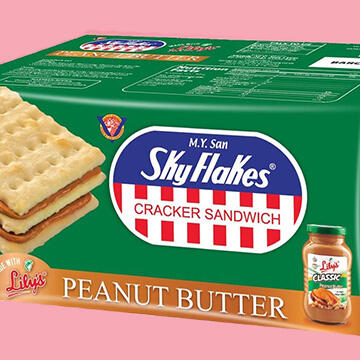
M.Y.SAN SkyFlakes Peanut Butter
| Ingredients | Chemical Formula | Elements Present | Atomic Weight | Physical and Chemical Properties | Uses |
|---|---|---|---|---|---|
| Yeast | C19H14O2 | Carbon, Hydrogen and Oxygen | 274 g/mol | They are fine particles in granular form;It converts fermented sugar into carbon dioxide and ethanol. | Leavens and rising agent for bread;Ferments beer and other alcoholic beverages; Used in the production of biofuel |
| Sodium Bicarbonate | NaHCO₃ | Sodium, Hydrogen, Carbon and Oxygen | 84 g/mol | It has a melting point of 50 °C and a boiling point of 851 ᵒ C; It is soluble in water; It has a density of 2.20 g/cm³. | An antacid used to relieve heartburn and indigestion; Used as an non-abrasive cleaner and gets rid of odor; A leavening agent for baked goods (cookies, muffins, cake) |
| Vitamin E | C29H50O2 | Carbon, Hydrogen and Oxygen | 430 g/mol | In the form of tocopherols, insoluble in water but soluble in nonpolar solvents;Good quenchers of free radicals | Used in supplements that support immune system; Applied topically to reduce inflammation |
| Salt | NaCl | Sodium and Chlorine | 58.44 g/mol | Salts are ionic in nature due to the presence of ions; They are brittle, hard, and crystalline solids. Salt is white, odorless, and it has a salty taste; It is also soluble in water. | Salt has long been used for flavoring and for preserving food; It has also been used in tanning, dyeing and bleaching, and the production of pottery, soap, and chlorine; Today, it is widely used in the chemical industry |
| Powdered Sugar | C12H22O11 | Carbon, Hydrogen, and Oxygen | 342.3 g/mol | Sucrose appears as white, odorless, crystalline or powdery solid; Denser than water; It tastes sweet; It is soluble in water. | Powdered sugar is used in industrial food production when a quick-dissolving sugar is required; Home cooks use it principally to make icing or frosting and other cake decorations; It is often dusted onto baked goods to add a subtle sweetness and delicate decoration. |
| Soya Lecithin | C42H80NO8P | Carbon, Hydrogen, Nitrogen, Oxygen, Phosphorus | 758.1 g/mol | Lecithins have emulsification and lubricant properties, and are a surfactant; They can be completely metabolized by humans, so are well tolerated by humans and non toxic when ingested. | Soy lecithins are important emulsifiers used in the food, feed, pharmaceutical, and technical industries |
| Palm Oil | CH3(CH2)14COOH | Carbon, Hydrogen and Oxygen | 256 g/mol | Its properties include solid fat content, viscosity, density, specific gravity, and refractive index; Research on phase transitions and polymorphism in palm oil has been also widely reported. | It is widely used in food processing; It is also used in personal products like shampoo, cosmetics, cleaning products and biodiesel. |
| Sugar | C12H22O11 | Carbon, Hydrogen and Oxygen. | 342 g/mol | It has an appearance of White, crystalline solid; It Decomposes at 459 K; It has a density of 1.587 g/cm3 | It is used for coating, adding volume or texture, and flavoring medicine; It can also act as a preservative and antioxidant. |
| Caramel | C7H10O2 | Carbon, Hydrogen, and Oxygen | 126.16 g/mol | light yellow to yellowish brown powder with a maple, burnt sugar odour; In most products, caramel has a very good stability. | Coloring foods, confectionery, and chemicals; Coloring carbonated beverages; cola and root beers. |
| Vegetable shortening | C40H56O2 | Carbon, Hydrogen, and Oxygen | 568.9 g/mol | Dark, yellowish brown liquid; It is insoluble. | Food additives. Includes spices, extracts, colorings, flavors, etc added to food for human consumption. |
| Peanut Butter (Triolein) | C57H104O6 | Carbon, Hydrogen, and Oxygen | 885.4 g/mol | Colorless to yellowish, oily odorless liquid. | served as a spread on bread, toast, or crackers, and used to make sandwiches. It is also used in a number of breakfast dishes and desserts. |
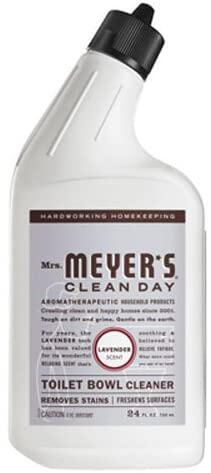
Mrs. Meyer’s Clean Day
| Ingredients | Chemical Formula | Elements Present | Atomic Weight | Physical and Chemical Properties | Uses |
|---|---|---|---|---|---|
| Water | H2O | Hydrogen and Oxygen | 18 g/mol | It is a polar molecule; A universal solvent; Tasteless and odorless; It has low electrical conductivity | Used in cleaning, cooking and bathing |
| Citric Acid | C₆H₈O₇ | Carbon, Hydrogen and Oxygen | 192 g/mol | Odorless and tasteless crystals; It is soluble in water; The solid has a density of 1.66 g/mL, melting point of 153 °C and boiling point of 175 °C. | Used as a flavouring; A preservative for soft drinks and candies; Used to stabilize and preserve medicine |
| Lactic Acid | C3H6O3 | Carbon, Hydrogen and Oxygen | 90 g/mol | It is a colorless to yellow syrupy liquid or a white powder; It is soluble in water and ethanol; It is corrosive to metals and tissue | Decontaminant in meat processing; Used as a food preservative, curing agent, and flavoring agent. |
| Xanthan Gum | C8H14Cl2N2O2 | Carbon, Hydrogen, Chlorine, Nitrogen, and Oxygen | 933.748 g/mol | Xanthan gum occurs as a cream- or white-colored, odorless, free flowing, fine powder. | Xanthan gum (corn starch gum) serves as a texturizer, carrier agent, and gelling agent in cosmetic preparations. It also stabilizes and thickens formulations. |
| Lavender (Linalool) | C10H18O | Carbon, Hydrogen, and Oxygen | 154.25 g/mol | two enantiomers of a naturally occurring terpene alcohol found in many flowers and spice plants; clear, colorless to pale yellow liquid. It has a floral, spicy, wood odor. | It is added to processed food and beverages, perfumes, cosmetics and soaps. It is used in household detergents and waxes. It is added to animal drugs, feeds and other products. It is used as a pesticide in pet sprays, dips or shampoos. It is used in carpet and surface treatments and as a pesticide fogger for indoor use. |
| Ethoxylated Alcohol | C13H28O | Carbon, Hydrogen, and Oxygen | 200.36 g/mol | offers exceptional wetting performance with relatively low phytotoxicity; good candidates for use as emulsifiers in Emulsifiable Concentrate (EC) and in Microemulsion (ME) products. | used in a wide variety of industrial and commercial settings. Because these compounds are surfactants, they can be used whenever oily substances come into contact with water or a surface. |
| Amyl Salicylate | C12H16O3 | Carbon, Hydrogen, and Oxygen | 208.25 g/mol | Amyl Salicylate has a molecular weight of 208.25 g/mol; It is colorless to pale yellow clear liquid in form with a boiling point of 270.0 °C | It is used in food additives as flavoring agents and in cosmetics for skin conditioning; It is also used as odor agents in the industry. |
| Benzisothiazolinone | C7H5NOS | Carbon, Hydrogen, Nitrogen, Oxygen, and Sulfur | 151.19 g/mol | It has a melting point 154-158 °C and a boiling point of 360°C with a density of 1.2170. | Benzisothiazolinone has a microbicide and a fungicide mode of action. It is widely used as a preservative; In paints, it is commonly used alone or as a mixture with methylisothiazolinone. Typical concentrations in products are 200–400 ppm depending on the application area and the combination with other biocides. According to a study in Switzerland, 19% of the paints, varnishes and coatings contained BIT in 2000. The fraction in adhesives, sealants, plasters and fillers was shown at that time as 25%.[3] A later study in 2014 shows a dramatic rise in usage, to 95.8% of house paints. |
| Camphor | C10H16O | Carbon, Hydrogen, Oxygen | 152.23 g/mol | Camphor appears as a colorless or white colored crystalline powder with a strong mothball-like odor; About the same density as water; Emits flammable vapors above 150°F. | Used to make moth proofings, pharmaceuticals, and flavorings; It can be used topically to relieve pain, irritation, and itching. Camphor is also used to relieve chest congestion and inflammatory conditions. It has a strong odor and taste and is easily absorbed through the skin. |
| Orange Peel Oil (Limonene) | C10H16 | Carbon, Hydrogen | 136 g/mol | It has a density of 0.8411 g/cm3; Its melting point is at −74.35 °C; It is odor is orange; It has an appearance of colorless to pale-yellow liquid | It is used to make medicine; Limonene is used for obesity, cancer, and bronchitis, but there is no good scientific evidence to support these uses; In foods, beverages, and chewing gum, limonene is used as a flavoring. |
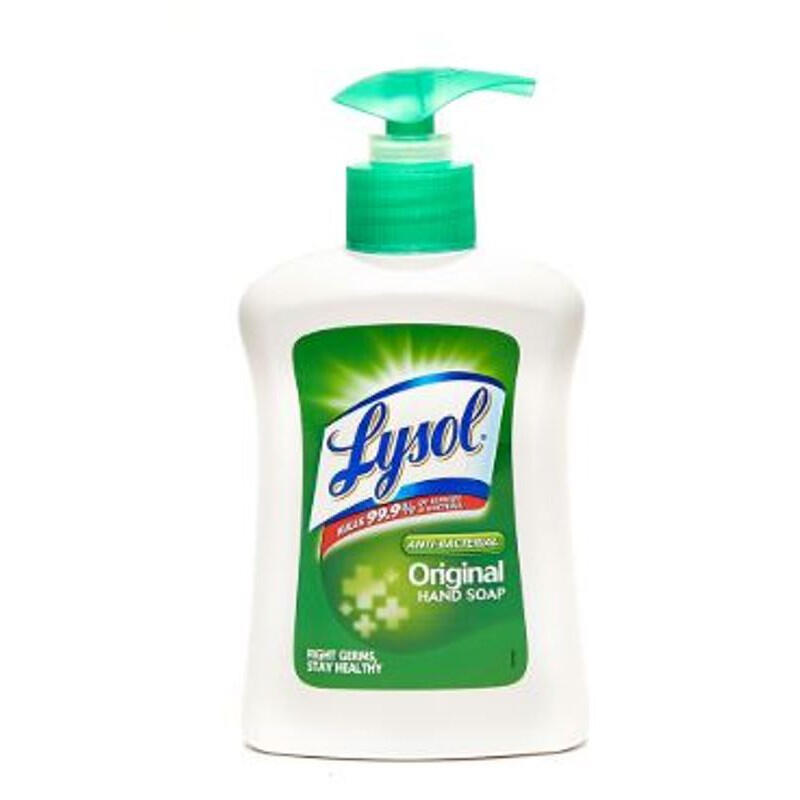
Lysol Antibacterial Hand Soap
| Ingredients | Chemical Formula | Elements Present | Atomic Weight | Physical and Chemical Properties | Uses |
|---|---|---|---|---|---|
| Sodium Hydroxide | NaOH | Sodium, Oxygen and Hydrogen | 40 g/mol | It is corrosive; It is a white crystalline odorless solid; It is soluble in water, ethanol and glycerol and insoluble in acetone and ether | Used in manufacturing of fabric, plastic wrap, paper and soap |
| Glycerin | C3H8O3 | Carbon, Hydrogen and Oxygen | 92 g/mol | It is a colorless, hygroscopic, highly viscous syrupy liquid; It is miscible in water and alcohol; It has a high boiling point of 563K | Used as a medication to prevent dry skin and treat skin irritations |
| Salicylic Acid | C7H6O3 | Carbon, Hydrogen and Oxygen | 138 g/mol | It is a white crystalline powder that is odorless; It is soluble in water; It is moderately acidic | Treatment of acne, dandruff, and psoriasis; It is used as a peeling agent |
| Sodium Chloride | NaCl | Sodium, Chloride | 58,44 g/mol | Sodium chloride appears as a white crystalline solid; Commercial grade usually contains some chlorides of calcium and magnesium which absorb moisture and cause caking. | Chemical , ceramic glazes, metallurgy, curing of hides, food preservative, mineral waters, soap manufacture , home water softeners, food seasoning, herbicide, fire extinguishing. |
| Sodium Laureth Sulfate | C14H29NaO5S | Carbon, Hydrogen, Sodium, Oxygen, and Sulfur | 332,43 g/mol | White solid in various forms with characteristic odor | widely used surfactant in cleaning products, cosmetics, and personal care products. The sodium lauryl sulfate formula is a highly effective anionic surfactant used to remove oily stains and residues. |
| Propylene Glycol | C3H8O2 | Carbon, Hydrogen, and Oxygen | 76.09 g/mol | It is a colorless viscous liquid that is practically odorless and practically tasteless; It has a boiling point of 370.8 °F at 760 mm Hg with a -76 °F melting point; It also has a density of 1.04 at 68 °F and is soluble in water, ethanol and acetone | It is used to absorb extra water and maintain moisture in certain medicines, cosmetics, or food products; It is a solvent for food colors and flavors, and in the paint and plastics industries; Propylene glycol is also used to create artificial smoke or fog used in fire-fighting training and in theatrical productions. |
| Tetrasodium EDTA | C10H12N2Na4O8 | Carbon, Hydrogen, Nitrogen, and Oxygen | 380.171 g·mol−1 | It has a molecular weight of 380.171 g·mol−1.; It is a white solid that is highly soluble in water. | It is used as a source of the chelating agent EDTA4-. A 1% aqueous solution has a pH of approximately 11.3. When dissolved in neutral water, it converts partially to H2EDTA^2-. Ethylenediaminetetraacetic acid is produced commercially via the intermediacy of tetrasodium EDTA. |
| Chloroxylenol | C8H9OCl | Carbon, Hydrogen, Oxygen, and Chlorine | 156.61 g/mol | It has a phenolic odor, and appears crystals from benzene; Chloroxylenol has a boiling point of 246 degrees Celsius and a melting point of 112-116 degrees Celsius; It is also soluble in ethanol, ether, and water. Slightly soluble in benzene and pet ether. | Chloroxylenol is used in hospitals and households for disinfection and sanitation; It is also commonly used in antibacterial soaps, wound-cleansing applications and household antiseptics such as Dettol liquid (to which it contributes its distinctive odor), cream and ointments. |
| Aqua | HNO3+3 HCl | Hydrogen, Nitrogen, Oxygen, Chlorine | 172 g/mol | It appears as a yellow liquid with a pungent odor prepared by mixing nitric acid and hydrochloric acid, usually in a ratio of one part of nitric acid to three or four parts of hydrochloric acid | It is also used in some laboratories to clean glassware of organic compounds and metal particles; It is also used in etching and in specific analytic procedures. |
| Ammonium Lauryl Sulfate | C12H29NO4S | Carbon, Hydrogen, Nitrogen, Oxygen, Sulfur | 283 g/mol | It has a yellowish viscous liquid appearance; It has a density of 1.02 g/cm3; Its boiling point is at 418 °C | It is used as a surfactant in shampoos, bath products, hair colorings, facial makeup, deodorants, perfumes, and shaving preparations |
| Citric Acid | C₆H₈O₇ | Carbon, Hydrogen, Oxygen | 192 g/mol | Odorless and tasteless crystals; It is soluble in water; The solid has a density of 1.66 g/mL, melting point of 153 °C and boiling point of 175 °C. | It is used as a flavoring and preserving agent especially in soft drinks and candies; It's also used to stabilize or preserve medicines and as a disinfectant against viruses and bacteria. |

Gatorade Cool Blue Raspberry
| Ingredients | Chemical Formula | Elements Present | Atomic Weight | Physical and Chemical Properties | Uses |
|---|---|---|---|---|---|
| Sodium Citrate | Na3C6H5O7 | Sodium, Carbon, Hydrogen and Oxygen | 258 g/mol | It is a white, crystalline powder or white, granular crystals that is slightly deliquescent in moist air; It is soluble in water and insoluble in alcohol | Used in medications that prevent gout or kidney stones |
| Monopotassium Phosphate | KH2PO4 | Potassium, Hydrogen, Phosphate and Oxygen | 136 g/mol | It is soluble in water and insoluble in ethanol; It is odorless; It is a white powder that is deliquescent | Used as a fertilizer, Food additive and buffering agent |
| Dextrose (D-glucose) | C₆H₁₂O₆ | Carbon, Hydrogen and Oxygen | 180 g/mol | It is a White crystalline powder; Soluble in water and acetic acid; It is colorless, and odorless | Used to treat hypoglycemia, often in people with diabetes;Used as a sweetener in baked products |
| Citric Acid | C₆H₈O₇ | Carbon, Hydrogen and Oxygen | 192 g/mol | Odorless and tasteless crystals; It is soluble in water; The solid has a density of 1.66 g/mL, melting point of 153 °C and boiling point of 175 °C. | Used as a flavouring; A preservative for soft drinks and candies; Used to stabilize and preserve medicine |
| Sugar | C12H22O11 | Carbon, Hydrogen and Oxygen. | 342 g/mol | It has an appearance of White, crystalline solid; It Decomposes at 459 K; has a density of 1.587 g/cm3 | It is used for coating, adding volume or texture, and flavoring medicine; It can also act as a preservative and antioxidant. |
| Aqua | H2O | Hydrogen and Oxygen | 18.015 g/mol | Water appears as a clear, nontoxic liquid composed of hydrogen and oxygen, essential for life and the most widely used solvent. Include water in a mixture to learn how it could react with other chemicals in the mixture. | Drinking, culinary purposes, bathing, washing, laundering, heating, agriculture, navigation. |
| Salt | NaCl | Sodium and Chlorine | 58.44 g/mol | Salts are ionic in nature due to the presence of ions; They are brittle, hard, and crystalline solids. Salt is white, odorless, and it has a salty taste; It is also soluble in water. | Salt has long been used for flavoring and for preserving food; It has also been used in tanning, dyeing and bleaching, and the production of pottery, soap, and chlorine; Today, it is widely used in the chemical industry |
| Glycerol Ester of Rosin | C23H36O4 | Carbon, Hydrogen, and Oxygen | 376.5 g/mol | Glero Ester of Rosin is hard, yellow to pale amber-coloured solid in form; It is insoluble in water but soluble in acetone; It also has an acid value of not less than 3 and not more than 9. | Glycerol esters of rosin, commonly known as ester gums, are highly versatile resins used in adhesives, coatings, inks, and other markets. Their unique functionality has led to specialized food applications in beverages and chewing gum; It can also be used as a stabilizer, thickening agent or an emulsifier. |
| Blue 1 | C37H34N2Na2O9S3 | Carbon, Hydrogen, Nitrogen, Sodium, Oxygen, and Sulfur | 792.85 g/mol | It is a reddish-blue powder or granules; It has a melting point of 283 degrees Celsius and is soluble in water. | Like many other color additives, the primary use of Blue No. 1 |
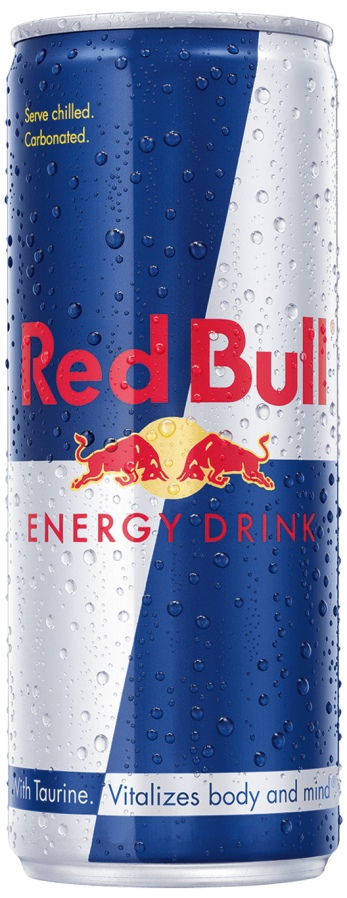
Red Bull
| Ingredients | Chemical Formula | Elements Present | Atomic Weight | Physical and Chemical Properties | Uses |
|---|---|---|---|---|---|
| Taurine | C2H7NO3S | Carbon, Hydrogen, Nitrogen, Oxygen and Sulfur | 125 g/mol | It is colorless to white solid and odorless; It is soluble in water; It has strong acidic compound | Used to treat heart failure, high blood pressure, high cholesterol and prevent plaque build-up in the artery |
| Caffeine | C8H10N4O2 | Carbon, Hydrogen, Nitrogen and Oxygen | 194 g/mol | It is a white, odorless and hygroscopic crystalline solid; It tastes bitter; Its melting point is 235ºC; It is soluble in water | Used as a stimulant for the nervous system; Used in medicines that aid in weight loss, headaches and energy drinks |
| Niacinamide | C6H6N2O | Carbon, Hydrogen, Nitrogen and Oxygen | 122 g/mol | It is water soluble; It is the active form of Vitamin B3; It is in the form of a white powder | Used to treat and prevent niacin deficiency; Used to balance oil production on skin |
| Dextrose | C₆H₁₂O₆ | Carbon, Hydrogen and Oxygen | 180 g/mol | It is a White crystalline powder; Soluble in water and acetic acid; It is colorless, and odorless | Used to treat hypoglycemia, often in people with diabetes; Used as a sweetener in baked products |
| Sucrose | C12H22O11 | Carbon, Hydrogen, and Oxygen | 342.3 g/mol | Sucrose appears as white odorless crystalline or powdery solid. Denser than water. | Sweetener in foods and soft drinks, manufacture of syrups, source of invert sugar, confectionary, preserves and jams, demulcent, pharmaceutical products, caramel, chemical intermediate for detergents, emulsifying agents, and other sucrose derivatives. |
| Pyridoxine HCL | C8H12ClNO3 | Carbon, Hydrogen, Chloride, Nitrogen, and Oxygen | 205.64 g/mol | White to practically white crystals or crystalline powder; Platelets or thick, birefringent rods from alcohol + acetone | Food additive permitted in food for human consumption. |
| Carbonated water | H2CO3 | Hydrogen, Carbon, and Oxygen | 62.02 g/mol | Carbonated water has a molecular weight of 62.02 g/mol. It is solid in form with 720 degrees Celsius melting point and solubility of 12.8 mg/mL (cold water) | Interestingly, a carbonated drink may even enhance digestion by improving swallowing ability and reducing constipation. It's also a calorie-free beverage that causes a pleasurable bubbly sensation. Many people prefer it over still water. |
| Magnesium Carbonate | MgCO3 | Magnesium, Carbon, and Oxygen | 84.3139 g/mol | Magnesite appears as white, yellowish, grayish-white or brown crystalline solid or crystalline powder. Density: 3-3.1 g cm-3. An important ore for magnesium. Used in the manufacture of materials capable of withstanding very high temperatures. Sometimes used to produce carbon dioxide. | The primary use of magnesium carbonate is the production of magnesium oxide by calcining. Magnesite and dolomite minerals are used to produce refractory bricks. MgCO3 is also used in flooring, fireproofing, fire extinguishing compositions, cosmetics, dusting powder, and toothpaste. |
| Baking Soda/ Sodium Bicarbonate | NaHCO₃ | Sodium, Hydrogen, Carbon, and Oxygen | 84.007 g/mol | Sodium bicarbonate is an odorless, white crystalline solid or fine powder. It has a slightly alkaline taste. Its density is 2.20 g mL-1 and it decomposes in temperatures above 50 ºC. The decomposition yields sodium carbonate. | Sodium bicarbonate , also known as baking soda, is used to relieve heartburn, sour stomach, or acid indigestion by neutralizing excess stomach acid. When used for this purpose, it is said to belong to the group of medicines called antacids. It may be used to treat the symptoms of stomach or duodenal ulcers. |
